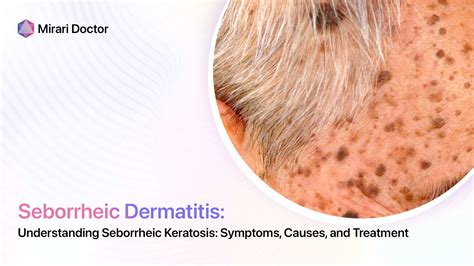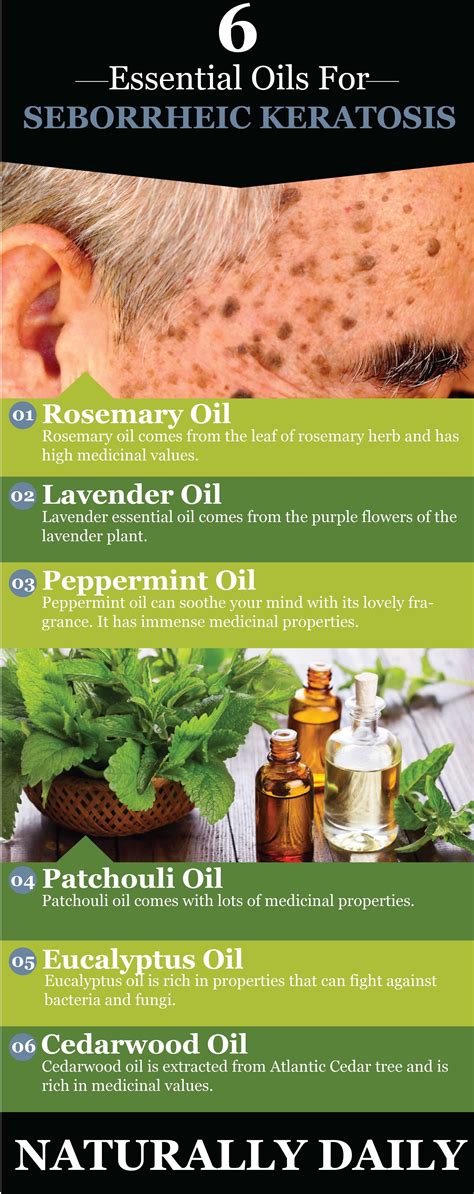Intro
Discover the various appearances of seborrheic keratosis through 9 revealing images. Learn to identify these benign growths, understand their causes, symptoms, and treatment options. Get a closer look at seborrheic keratosis pictures to differentiate them from skin cancer, moles, and other skin conditions, and find out when to consult a dermatologist.
Seborrheic keratosis is a common skin condition that affects millions of people worldwide. It is characterized by the appearance of benign growths or lesions on the skin, which can be brown, black, or tan in color. While seborrheic keratosis is not a serious medical condition, it can be unsightly and may cause discomfort or embarrassment for those who have it. In this article, we will explore what seborrheic keratosis is, its causes and symptoms, and how it can be treated.
Seborrheic keratosis is a type of skin growth that is caused by an overproduction of skin cells. It is more common in older adults and people with a family history of the condition. The growths can appear anywhere on the body, but they are most commonly found on the face, chest, back, and shoulders. They can be flat or raised, and may have a rough or wart-like texture.

Causes and Risk Factors
While the exact cause of seborrheic keratosis is not known, there are several factors that can increase a person's risk of developing the condition. These include:
- Age: Seborrheic keratosis is more common in older adults, and the risk of developing the condition increases with age.
- Family history: People with a family history of seborrheic keratosis are more likely to develop the condition.
- Sun exposure: Exposure to the sun's ultraviolet (UV) rays can increase the risk of developing seborrheic keratosis.
- Genetics: Certain genetic mutations can increase the risk of developing seborrheic keratosis.
Symptoms
The symptoms of seborrheic keratosis can vary depending on the location and size of the growths. Common symptoms include:
- Brown, black, or tan growths on the skin
- Flat or raised growths
- Rough or wart-like texture
- Itching or discomfort
- Bleeding or oozing

Treatment Options
While seborrheic keratosis is not a serious medical condition, it can be unsightly and may cause discomfort or embarrassment. There are several treatment options available, including:
- Cryotherapy: This involves freezing the growths with liquid nitrogen, which can help to remove them.
- Electrodessication: This involves using an electric current to remove the growths.
- Laser therapy: This involves using a laser to remove the growths.
- Surgical excision: This involves surgically removing the growths.
Home Remedies
There are also several home remedies that can help to treat seborrheic keratosis. These include:
- Aloe vera: Aloe vera has anti-inflammatory properties that can help to soothe and calm the skin.
- Tea tree oil: Tea tree oil has antibacterial properties that can help to prevent infection.
- Coconut oil: Coconut oil has moisturizing properties that can help to keep the skin hydrated and healthy.

Prevention
While it is not possible to completely prevent seborrheic keratosis, there are several steps that can be taken to reduce the risk of developing the condition. These include:
- Protecting the skin from the sun: Using sunscreen and protective clothing can help to reduce the risk of developing seborrheic keratosis.
- Avoiding excessive sun exposure: Avoiding excessive sun exposure, especially during peak hours, can help to reduce the risk of developing seborrheic keratosis.
- Keeping the skin moisturized: Keeping the skin moisturized and hydrated can help to keep it healthy and reduce the risk of developing seborrheic keratosis.

Conclusion
Seborrheic keratosis is a common skin condition that can be unsightly and may cause discomfort or embarrassment. While it is not a serious medical condition, it can be treated with a variety of methods, including cryotherapy, electrodessication, laser therapy, and surgical excision. By understanding the causes and symptoms of seborrheic keratosis, and by taking steps to prevent it, individuals can reduce their risk of developing the condition and keep their skin healthy and looking its best.
We hope this article has provided you with a better understanding of seborrheic keratosis and its treatment options. If you have any questions or concerns, please don't hesitate to comment below.
What is seborrheic keratosis?
+Seborrheic keratosis is a common skin condition that is characterized by the appearance of benign growths or lesions on the skin.
What causes seborrheic keratosis?
+The exact cause of seborrheic keratosis is not known, but it is thought to be related to an overproduction of skin cells.
How is seborrheic keratosis treated?
+Seborrheic keratosis can be treated with a variety of methods, including cryotherapy, electrodessication, laser therapy, and surgical excision.

